Supermicro M11sdv8cln4f Review Amd Epyc 3251 Mitx Platform
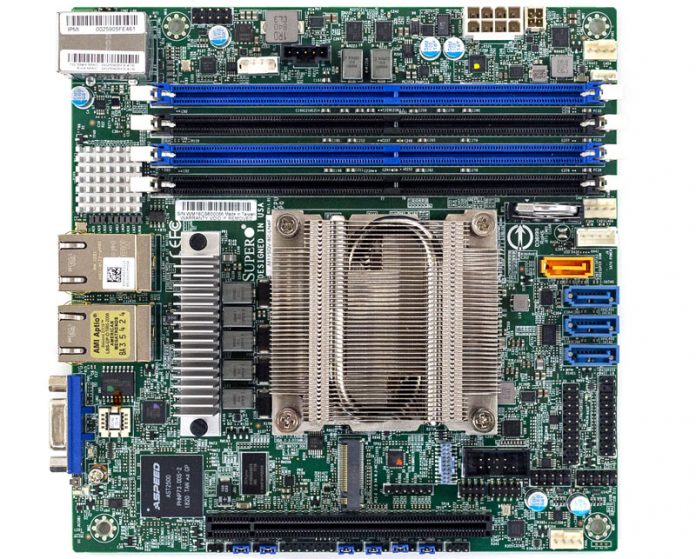
Our Supermicro M11SDV-8C-LN4F review shows the power of the AMD EPYC 3000 embedded platform. With the onboard AMD EPYC 3251 8 core and sixteen thread CPU, the solution is highly competitive with the Intel Xeon D-1500 and Xeon D-2100 series in terms of functioning and ability consumption. Furthermore, if you are a vendor looking to dual source your CPU suppliers for x86 operation, the AMD EPYC 3251 is compatible which makes it perfect for those looking to diversify their supply base of operations.
We attended the AMD EPYC embedded launch in London about a yr ago. Nosotros start benchmarked the AMD EPYC 3251 a few months ago. Now we take a commercial mITX platform from Supermicro that you tin can purchase in the aqueduct and start working with an AMD EPYC powered server platform at a very depression toll. Our Supermicro M11SDV-8C-LN4F review is going to bear witness you the ins and outs of the platform.
Test Configuration
Here is our basic configuration for this grade of CPU:
- Motherboard: Supermicro M11SDV-8C-LN4F
- CPU: AMD EPYC 3251
- RAM: 4x 16GB DDR4-2666 ECC RDIMMs
- SSD: Intel DC S3710 400GB
- SATADOM: Supermicro 32GB SATADOM
The CPU itself supports up to 512GB of RAM, in a 4x 128GB configuration. That is equally much every bit the Intel Xeon D-2100 serial platforms and more than both the Intel Xeon D-1500 and Intel Atom C3000 series embedded platforms.
We are going to take reviews down the stack over the course of the next few weeks. Practically, the Supermicro M11SDV-8C-LN4F, M11SDV-8C+-LN4F, M11SDV-8CT-LN4F, M11SDV-4C-LN4F, and M11SDV-4CT-LN4F are all very like. The 8C+ is the same as what we are reviewing just with an active CPU cooler. The rest of the SKU stack just utilise lower price and performance CPU models. With the Supermicro M11SDV-8CT-LN4F, only DDR4-2133 speeds are supported to ensure that eight core model is able to maintain the everyman power consumption. This Supermicro M11SDV-8C-LN4F has both SMT and DDR4-2666 back up.
You will see this test setup more in the future and information technology is similar to our Intel Xeon D review platform. We also spent fourth dimension plugging in devices to ensure the NVMe and PCIe lanes worked as advertised. We also tried up to 128GB of RAM in 4x 32GB configurations in our testing.
Supermicro M11SDV-8C-LN4F Overview
Measuring half dozen.7″ ten half dozen.seven″ the Supermicro M11SDV-8C-LN4F is a compact mITX motherboard. Compared to previous generations, the Supermicro A2SDi-8C+-HLN4F offers a lot of expansion functionality in a very compact space. Supermicro includes both a 24-pin ATX and a DC input every bit ways to ability the motherboard so you can easily cull a case with either a standard PC power supply or an external power brick. That deployment flexibility makes the platform more than versatile.
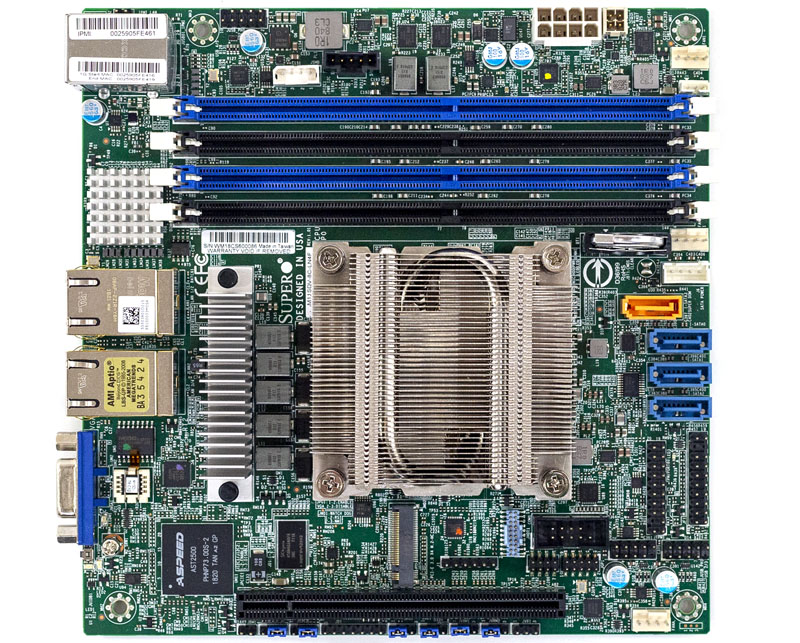
Sporting the AMD EPYC 3251 we have the beginning Intel Xeon D competitor from the AMD EPYC 3000 line. Hither is a lscpu output:
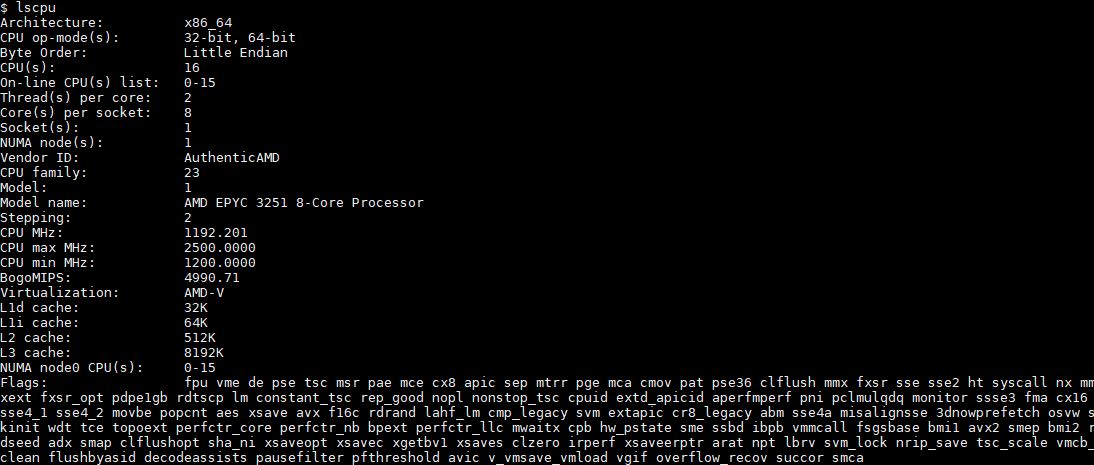
Since this class of system is expected to run computationally heavier workloads and virtualization or containers, RAM can exist a priority. Here, the motherboard can support upward to 4x 128GB DDR4-2666 DIMMs for a total of 512GB. We run into 128GB or even 256GB as being the limit about users will want given current DRAM pricing.
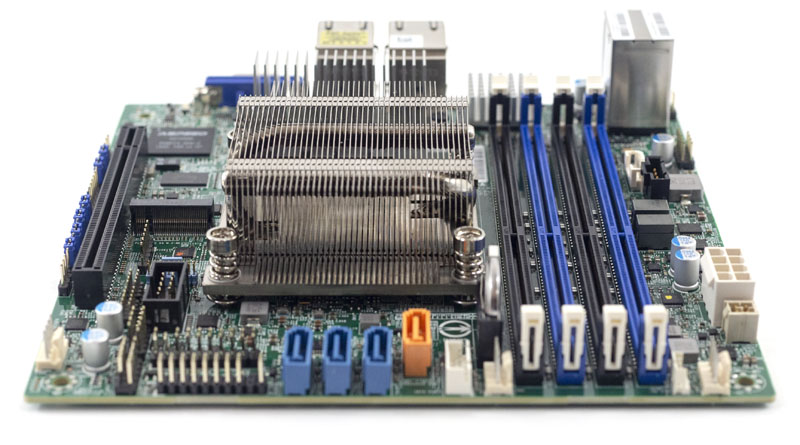
Airflow wise, all of the initial Supermicro M11SDV platforms, with the exception of the 8C+, are passively cooled. The AMD EPYC 3251 is a part that needs airflow over the heatsink. The passive heatsink design allows 1 to apply redundant cooling fans on the platform.
For M.2 connectivity there is a PCIe 3.0 x4 K.two 2280 (80mm) slot for SSDs. Many SSDs with power loss protection are 110mm. We see this G.2 slot used more often than not for a read cache or kicking device in systems.
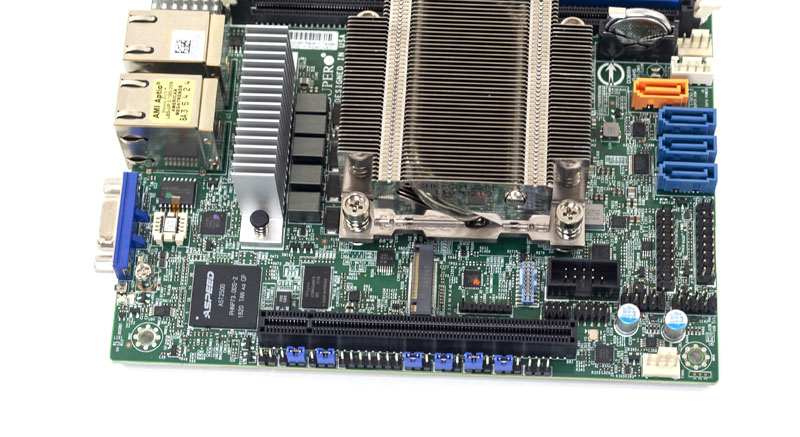
Likewise, there is SR-IOV and IOMMU support on the platform. We also wanted to note for our readers that the PCIe x16 slot is capable of running in x16, x8x8, or x4x4x4x4 mode. The 4×four mode is useful if ane, for example, wanted to apply iv PCIe NVMe SSDs:
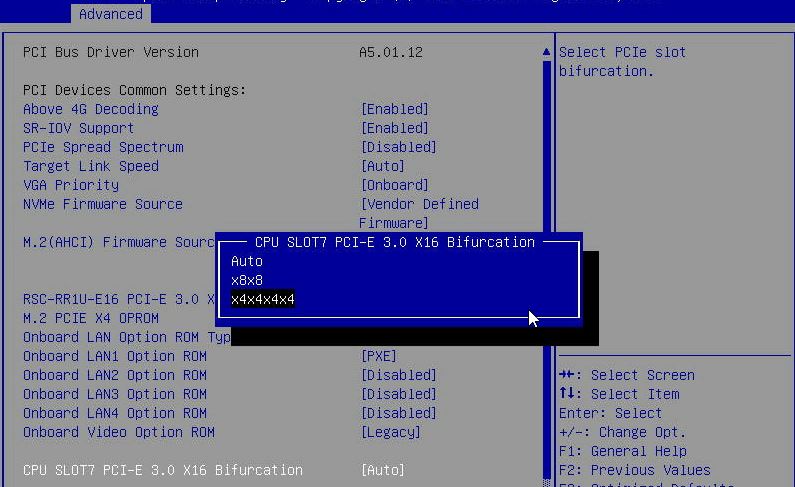
The Supermicro M11DV-8C-LN4F has a standard front end panel header, COM port, and USB 2.0 headers, although no Type-A USB internal header and no USB 3.0 front end panel header. From the look of the board, at that place does non seem to be room for those.
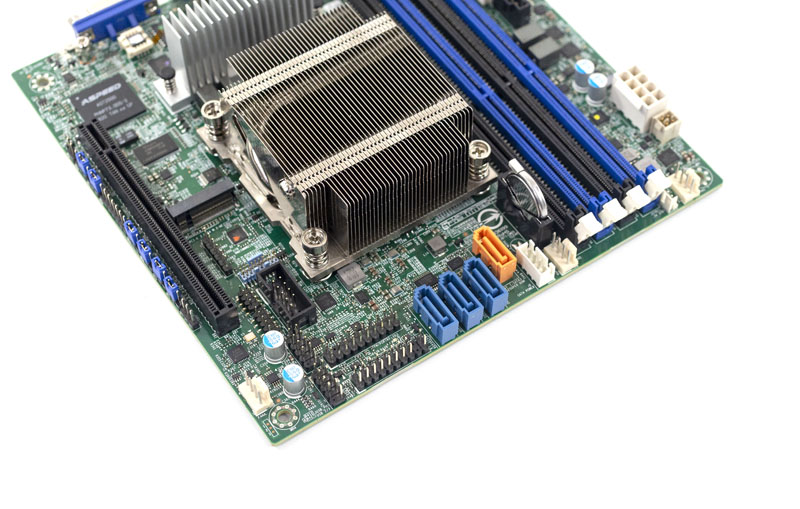
We likewise encounter four seven-pin SATA ports. One is an orange/ gold port for SATADOMs. In that port, a SATADOM does not need an additional power cable to operate which is handy in embedded applications. That white header between the SATADOM port and the battery is a power connector. When on DC power, Supermicro makes cables for that header that can power four hard drives/ SSDs. We are going to evidence that in the Supermicro AS-E301-9D-8CN4 system review.
The motherboard itself has three 4-pin PWM headers. That allows for a redundant SoC cooling path also equally a peripheral fan.
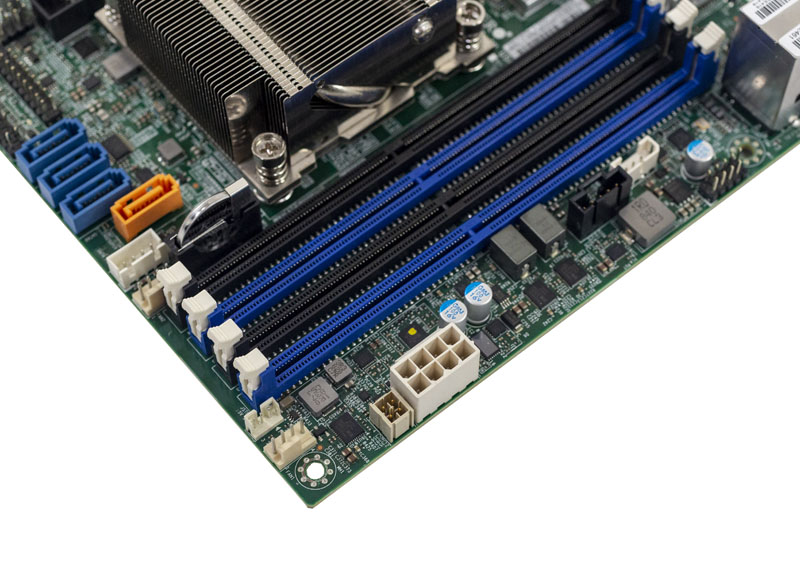
The rear I/O is comprised of a legacy VGA port on the right side and two USB 3.0 ports plus a direction port on the left. Overall I/O pinout is uniform with a wide range of Supermicro embedded products so those that have systems based on Intel embedded products tin can likely use the same I/O shields and chassis with the Supermicro M11SDV-8C-LN4F.

Networking is provided by an Intel i350 quad port NIC. This is a 1GbE NIC that supports higher-end features like SR-IOV. At the same time, it is not leveraging the AMD EPYC 3251's quad 10GbE NIC (as seen below from our previous slice.) While we wanted to meet a 10GBE solution, we empathize the conservative design decision for a beginning-generation embedded product. The Intel i350 is well supported by every major Bone vendor. Hopefully Supermicro will release quad 10GbE versions in the future, just there is little room for 10GbE cages on the mITX motherboard so space is a constraint as well.

Side by side, were are going to await at the Supermicro M11SDV-8C-LN4F direction and system topology. We volition so testify performance figures forth with ability consumption and our final thoughts.
Source: https://www.servethehome.com/supermicro-m11sdv-8c-ln4f-review-amd-epyc-3251-mitx-platform/
0 Response to "Supermicro M11sdv8cln4f Review Amd Epyc 3251 Mitx Platform"
Post a Comment